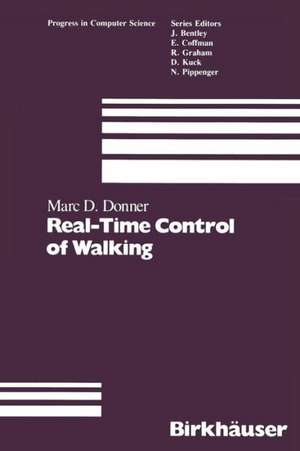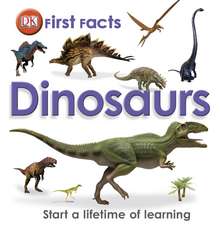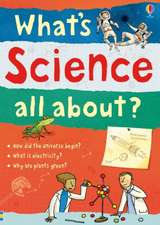Real-Time Control of Walking: Progress in Computer Science and Applied Logic, cartea 7
Autor M.D. Donneren Limba Engleză Paperback – 1986
Din seria Progress in Computer Science and Applied Logic
- 20%
 Preț: 342.78 lei
Preț: 342.78 lei -
 Preț: 380.25 lei
Preț: 380.25 lei - 20%
 Preț: 333.54 lei
Preț: 333.54 lei - 20%
 Preț: 1020.33 lei
Preț: 1020.33 lei - 15%
 Preț: 591.29 lei
Preț: 591.29 lei - 20%
 Preț: 340.49 lei
Preț: 340.49 lei - 20%
 Preț: 611.79 lei
Preț: 611.79 lei - 20%
 Preț: 334.71 lei
Preț: 334.71 lei - 20%
 Preț: 655.85 lei
Preț: 655.85 lei -
 Preț: 387.75 lei
Preț: 387.75 lei - 15%
 Preț: 588.04 lei
Preț: 588.04 lei - 20%
 Preț: 586.71 lei
Preț: 586.71 lei - 20%
 Preț: 474.87 lei
Preț: 474.87 lei -
 Preț: 410.88 lei
Preț: 410.88 lei -
 Preț: 393.74 lei
Preț: 393.74 lei -
 Preț: 403.75 lei
Preț: 403.75 lei - 15%
 Preț: 646.75 lei
Preț: 646.75 lei - 15%
 Preț: 646.43 lei
Preț: 646.43 lei - 20%
 Preț: 646.80 lei
Preț: 646.80 lei - 20%
 Preț: 339.66 lei
Preț: 339.66 lei - 15%
 Preț: 698.94 lei
Preț: 698.94 lei - 15%
 Preț: 653.79 lei
Preț: 653.79 lei - 18%
 Preț: 730.79 lei
Preț: 730.79 lei -
 Preț: 399.29 lei
Preț: 399.29 lei - 20%
 Preț: 420.91 lei
Preț: 420.91 lei - 20%
 Preț: 335.03 lei
Preț: 335.03 lei -
 Preț: 379.86 lei
Preț: 379.86 lei - 20%
 Preț: 334.86 lei
Preț: 334.86 lei
Preț: 381.00 lei
Nou
Puncte Express: 572
Preț estimativ în valută:
72.91€ • 76.31$ • 60.68£
72.91€ • 76.31$ • 60.68£
Carte tipărită la comandă
Livrare economică 31 martie-14 aprilie
Preluare comenzi: 021 569.72.76
Specificații
ISBN-13: 9780817633325
ISBN-10: 0817633324
Pagini: 180
Ilustrații: XVI, 160 p.
Dimensiuni: 152 x 229 x 9 mm
Greutate: 0.25 kg
Ediția:1987
Editura: Birkhäuser Boston
Colecția Birkhäuser
Seria Progress in Computer Science and Applied Logic
Locul publicării:Boston, MA, United States
ISBN-10: 0817633324
Pagini: 180
Ilustrații: XVI, 160 p.
Dimensiuni: 152 x 229 x 9 mm
Greutate: 0.25 kg
Ediția:1987
Editura: Birkhäuser Boston
Colecția Birkhäuser
Seria Progress in Computer Science and Applied Logic
Locul publicării:Boston, MA, United States
Public țintă
ResearchCuprins
1.0 Introduction.- One — Machine and animal walking.- 2.0 Animal walking.- 3.0 Other walking work.- 4.0 SSA walking machine.- 5.0 Walking program.- Two — Programming for robotics and control.- 6.0 Inadequacies of existing control structures.- 7.0 OWL language.- Three — Results and conclusions.- 8.0 Experimental results.- 9.0 Discussion and conclusions.- A.O Walking program code.- A.1 Overview.- A.2 Walk.owl.- A.3 Load5.owl.- A.4 Drive7.owl.- A.5 Unload3.owl.- A.6 Recover6.owl.- A.7 Waveinit.owl.- A.8 Sensors.owl.- A.9 Data.owl.- A.10 Trouble.owl.- A.11 Comps.owl.- B.0 Data.- B.1 Description of data figures.- B.2 Data plots.- C.0 OWL primitives.- C.1 OWL control primitives.- C.2 Compiler directives and declaration keywords.- C.3 Sensor primitives.- C.4 Valve command primitives.- C.5 I/O primitives.- C.6 Miscellaneous primitives.- D.0 The Trojan Cockroach.



